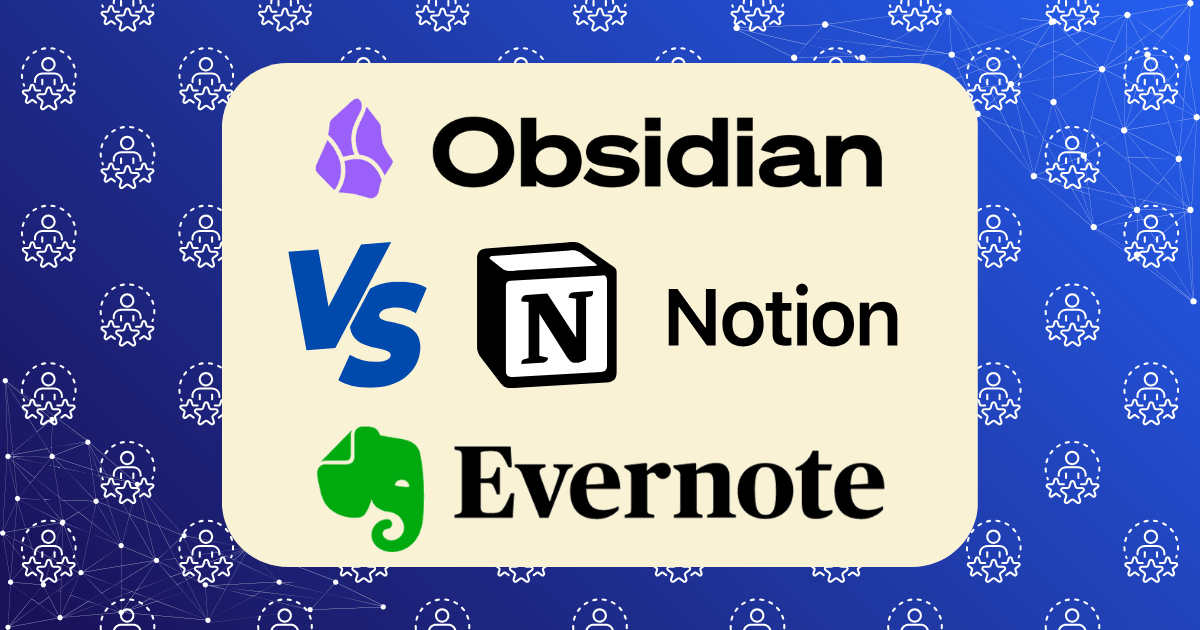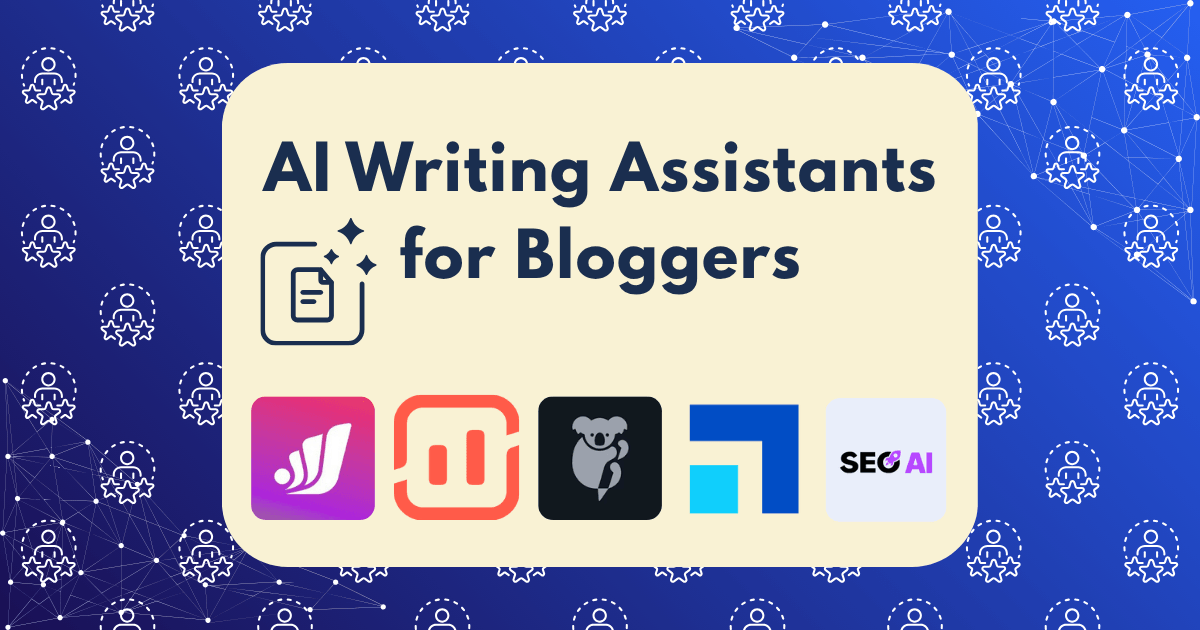Notion vs Obsidian vs Evernote: I Organized the Same Projects in Each to Find the Best System

In the quest for the perfect productivity system, few decisions feel as consequential as choosing the right digital workspace. The psychological impact of this choice extends beyond mere features and interfaces—it shapes how we think, create, and execute our most important work.
As someone who has spent the last decade obsessively optimizing my productivity stack, I’ve watched with fascination as Notion, Obsidian, and Evernote have emerged as the dominant players in the personal knowledge management space. Each platform has passionate advocates who insist their choice is objectively superior. Yet most comparisons remain frustratingly superficial, focusing on feature checklists rather than real-world application.
To settle this debate definitively—at least for my own workflow—I conducted a comprehensive experiment: I organized the exact same three projects across all three platforms, using each exclusively for two weeks. This wasn’t a casual test; I transferred my entire professional life into each system, forcing myself to adapt to their unique paradigms and philosophies.
The results were surprising, revealing strengths and weaknesses that no feature comparison could capture. This analysis goes beyond surface-level differences to examine how each platform fundamentally shapes your relationship with information, collaboration, and project execution.
The Experiment: Three Projects, Three Systems
To ensure a fair comparison, I selected three distinct project types that would test different aspects of each platform:
- Content Marketing Campaign – A collaborative project requiring research, content creation, and team coordination
- Personal Knowledge Base – A collection of interconnected notes on artificial intelligence and its business applications
- Product Launch – A complex project with multiple timelines, tasks, and resources
For each platform, I transferred the complete project structure, including all notes, tasks, timelines, and resources. I then used each system exclusively for two weeks, maintaining a detailed journal of my experience.
Let’s examine how each platform performed across key dimensions.
Information Architecture: How Each System Organizes Your Thinking
The fundamental difference between these platforms lies not in their features, but in how they structure information—and by extension, how they structure your thinking.
Notion: The Flexible Database
Core Philosophy: Everything is a block within a database.
Notion treats information as modular components that can be arranged, filtered, and viewed in multiple ways. This database-centric approach proved remarkably adaptable for my content marketing campaign:
- I created a content database with custom properties for status, assigned team members, and publication channels
- Multiple views (kanban, calendar, list) provided different perspectives on the same information
- Linked databases allowed me to reference the same content across different project pages
Psychological Impact: Notion encourages systems thinking. I found myself naturally categorizing information and building relationships between different elements. This structured approach helped clarify complex projects but occasionally felt constraining for free-form ideation.
Best Use Case: The content marketing campaign thrived in Notion. The ability to create linked databases for content pieces, team members, and distribution channels created a powerful system where changes in one area automatically reflected elsewhere.
Obsidian: The Knowledge Graph
Core Philosophy: Everything is a note within a network.
Obsidian treats information as a network of interconnected notes, emphasizing associations over hierarchies. This approach transformed how I built my personal knowledge base:
- Bidirectional linking created an emergent structure that revealed unexpected connections
- The graph view provided visual insights into relationship clusters and knowledge gaps
- Local storage of plain Markdown files gave me complete ownership and portability
Psychological Impact: Obsidian encourages associative thinking. I found myself making more connections between seemingly unrelated ideas and discovering insights I might have missed in a more rigid system. The emphasis on linking created a more organic knowledge structure that evolved naturally over time.
Best Use Case: The personal knowledge base on AI flourished in Obsidian. The ability to quickly link related concepts and visualize the entire knowledge network revealed patterns and connections that remained hidden in other systems.
Evernote: The Digital Filing Cabinet
Core Philosophy: Everything is a note within a notebook.
Evernote treats information as documents organized in a traditional hierarchy of notebooks and tags. This straightforward approach provided clear benefits:
- The familiar folder-like structure required minimal learning curve
- Powerful search capabilities made finding specific information effortless
- Superiordocument handling and OCR made incorporating research materials seamless
Psychological Impact: Evernote encourages categorical thinking. I found myself creating clear classifications for information and focusing on comprehensive documentation. This approach provided excellent clarity but sometimes limited creative connections between disparate ideas.
Best Use Case: Surprisingly, the product launch project worked best in Evernote. The straightforward organization kept critical information accessible, while the superiordocument handling made managing specifications, contracts, and research materials effortless.
Workflow Efficiency: Getting Things Done in Each System
Beyond organization, productivity systems must support efficient workflows. Each platform revealed distinct strengths and limitations in day-to-day use.
Notion: Integrated Workflows
Strengths:
- Unified task and information management eliminated context switching
- Templates accelerated repetitive processes
- Database filters and views enabled powerful custom workflows
- Real-time collaboration streamlined team coordination
Limitations:
- Performance issues with larger databases caused occasional frustration
- The block-based editor sometimes felt clunky for extended writing
- Mobile experience lagged behind desktop functionality
- Offline access was unreliable
Efficiency Score: 8/10
My content marketing workflow in Notion was remarkably smooth. I created a content production pipeline using linked databases that tracked each piece from ideation to publication. Team members could collaborate in real-time, with changes instantly visible to everyone. However, performance occasionally suffered with larger databases, and the mobile experience felt compromised compared to desktop.
Obsidian: Frictionless Capture
Strengths:
- Lightning-fast performance even with thousands of notes
- Keyboard-centric interface minimized mouse usage
- Plain text Markdown ensured future-proof portability
- Extensive plugin ecosystem enabled workflow customization
Limitations:
- Limited native collaboration capabilities
- Steeper learning curve, especially for non-technical users
- Less structured task management required additional plugins
- Visual organization options were more limited
Efficiency Score: 7/10
My knowledge management workflow in Obsidian was exceptionally fluid. The speed of capture and linking allowed me to focus on thinking rather than organizing. The extensive plugin ecosystem let me customize workflows precisely to my needs. However, collaboration required external tools, and the learning curve was steeper, particularly for implementing more complex systems.
Evernote: Reliable Capture
Strengths:
- Superior web clipper saved significant research time
- Excellent OCR made all documents searchable
- Consistent cross-platform experience maintained workflow continuity
- Intuitive interface required minimal training
Limitations:
- Limited customization restricted workflow optimization
- Basic task management capabilities
- Fewer integration options compared to competitors
- Notebook structure could become unwieldy with complex projects
Efficiency Score: 6/10
My product launch workflow in Evernote benefited from its reliable capture capabilities. The web clipper and document scanning features streamlined research collection, while the powerful search made finding specific information effortless. However, the limited customization options meant I couldn’t optimize workflows to the same degree as with other platforms.
Collaboration: Working with Others in Each System
Modern productivity often involves teamwork. Each platform offered distinctly different collaboration experiences.
Notion: True Real-Time Collaboration
Collaboration Model: Google Docs-style real-time editing with comments, mentions, and permissions.
Strengths:
- Simultaneous editing with visible cursors
- Granular page and database permissions
- Comment threads for focused discussions
- Activity history tracked changes
Limitations:
- No offline collaboration capabilities
- Performance issues with many simultaneous editors
- Limited notification controls led to occasional overload
Collaboration Score: 9/10
Notion excelled in team environments. During the content marketing project, five team members worked simultaneously across various aspects of the campaign. The ability to see everyone’s cursors in real-time, leave contextual comments, and maintain a single source of truth for all project information dramatically reduced email and meetings.
Obsidian: Limited Native Collaboration
Collaboration Model: Git-like sync with no native real-time collaboration.
Strengths:
- Obsidian Sync provided version history
- Git integration enabled developer-style collaboration
- Complete control over what information is shared
Limitations:
- No real-time co-editing
- Collaboration required technical setup
- No native commenting or feedback system
Collaboration Score: 4/10
Obsidian’s collaboration capabilities were its clear weakness. While Obsidian Sync provided reliable synchronization across my devices, working with others required external tools. For my knowledge base project, this wasn’t problematic since it was primarily personal, but it would be a significant limitation for team projects.
Evernote: Sharing-Focused Collaboration
Collaboration Model: Note sharing with basic editing permissions.
Strengths:
- Simple note sharing with clear permissions
- Consistent experience across platforms
- Established workflows familiar to many users
- Email integration for sharing with non-users
Limitations:
- No real-time co-editing
- Basic commenting capabilities
- Limited workspace organization for teams
Collaboration Score: 6/10
Evernote offered adequate but not exceptional collaboration. For the product launch project, I could share notebooks with stakeholders and receive comments, but the lack of real-time collaboration meant more reliance on meetings and external communication tools. The familiar interface, however, meant team members required minimal training.
Customization and Flexibility: Adapting Each System to Your Needs
A productivity system should conform to your workflow, not force you to conform to it. Each platform offered different levels of adaptability.
Notion: Modular Flexibility
Customization Approach: Block-based construction with templates and database views.
Strengths:
- Database properties enabled custom metadata systems
- Multiple views of the same information (kanban, calendar, list, etc.)
- Extensive template gallery for quick setup
- Formula properties for automated calculations
Limitations:
- Limited visual customization beyond basic colors
- No scripting or advanced automation without APIs
- Customization sometimes required workarounds
Flexibility Score: 8/10
Notion’s database-centric approach provided exceptional flexibility for structuring information. For the content marketing campaign, I created custom properties to track everything from SEO metrics to content reuse opportunities. However, visual customization was limited, and some workflows required creative workarounds to implement.
Obsidian: Developer-Level Customization
Customization Approach: Plugin ecosystem, CSS themes, and custom JavaScript.
Strengths:
- Extensive plugin ecosystem (2,000+ community plugins)
- Complete visual customization through CSS
- Custom JavaScript for advanced functionality
- Dataview plugin enabled database-like queries
Limitations:
- Required technical knowledge for advanced customization
- Inconsistent experience across plugins
- Potential plugin conflicts and maintenance issues
Flexibility Score: 9/10
Obsidian offered the highest ceiling for customization, provided you have the technical skills. For my knowledge base, I implemented custom CSS for different note types and used the Dataview plugin to create dynamic content lists. The plugin ecosystem enabled nearly unlimited possibilities, though sometimes at the cost of simplicity.
Evernote: Limited but Accessible Customization
Customization Approach: Tags, saved searches, and basic templates.
Strengths:
- Intuitive tagging system
- Saved searches for quick access to filtered information
- Template functionality for consistent note creation
- Consistent experience with minimal maintenance
Limitations:
- No custom metadata beyond tags
- Limited layout and organization options
- Few integration possibilities with other tools
Flexibility Score: 5/10
Evernote offered the least customization but maintained a consistent, reliable experience. For the product launch project, I relied heavily on its tagging system and saved searches to organize information. The limitations sometimes proved beneficial by reducing “productivity system tinkering” and keeping the focus on the work itself.
Long-term Sustainability: Will Your System Stand the Test of Time?
A productivity system is an investment. Beyond immediate utility, I evaluated each platform’s sustainability for long-term use.
Notion: Platform Ecosystem
Data Portability: Proprietary format with export options, but complex structures don’t transfer well.
Longevity Factors:
- Well-funded company with growing enterprise adoption
- Regular feature updates and improvements
- Strong API enabling integrations
- Proprietary data format creates some lock-in
Sustainability Score: 7/10
Notion’s growing ecosystem and regular updates suggest strong longevity. However, the proprietary data format creates some risk. During my experiment, I attempted to export my content marketing project to other platforms and found that while basic content transferred, the complex database relationships were lost.
Obsidian: Future-Proof Foundation
Data Portability: Plain text Markdown files that work with numerous applications.
Longevity Factors:
- Local storage of plain text files ensures permanence
- Thriving community and plugin ecosystem
- Sustainable business model with optional paid add-ons
- Platform-independent data format
Sustainability Score: 10/10
Obsidian’s use of local Markdown files provides unmatched sustainability. Even if the application ceased development tomorrow, all my notes would remain accessible in any text editor or Markdown application. This future-proof foundation gave me confidence that my knowledge base would remain viable indefinitely.
Evernote: Established Stability
Data Portability: Proprietary format with standard export options.
Longevity Factors:
- Long-established company with proven staying power
- Stable feature set with incremental improvements
- Large user base creates inertia against discontinuation
- Recent acquisition introduces some uncertainty
Sustainability Score: 6/10
Evernote’s long history provides confidence in its stability, though recent business changes introduce some uncertainty. The export options are adequate but not seamless. When exporting my product launch project, I found that while the content transferred successfully, some formatting and organization were lost.
Performance and Reliability: Day-to-Day Experience
Even the most feature-rich system fails if it’s slow or unreliable. I carefully tracked performance issues throughout my experiment.
Notion: Occasionally Sluggish
Performance Characteristics:
- Page loading times increased with database complexity
- Occasional sync issues required refreshing
- Mobile performance lagged behind desktop
- Offline mode was functional but limited
Reliability Issues Encountered:
- Two instances of database views not updating properly
- Occasional slow loading with image-heavy pages
- One brief service outage during testing period
Performance Score: 6/10
Notion’s performance was adequate but inconsistent. With the content marketing project, I noticed increasing sluggishness as the database grew. The mobile experience was functional but noticeably slower than desktop, and offline access was limited to previously opened pages.
Obsidian: Lightning Fast
Performance Characteristics:
- Near-instant note opening and creation
- Smooth graph visualization even with thousands of notes
- Excellent offline functionality
- Consistent performance across devices
Reliability Issues Encountered:
- One plugin conflict required troubleshooting
- Occasional sync conflicts with Obsidian Sync
- No significant performance degradation issues
Performance Score: 9/10
Obsidian’s performance was exceptional. Even with my knowledge base growing to over 500 interconnected notes, the application remained lightning fast. The local-first approach ensured complete offline functionality, and sync issues were rare and easily resolved.
Evernote: Consistent but Limited
Performance Characteristics:
- Reliable note loading and creation
- Smooth search functionality even with large notebooks
- Good offline capabilities with occasional sync delays
- Consistent cross-platform experience
Reliability Issues Encountered:
- Occasional sync delays between devices
- Some formatting inconsistencies between platforms
- No significant performance issues
Performance Score: 7/10
Evernote delivered consistent performance throughout the testing period. The product launch project, with its numerous documents and attachments, didn’t noticeably impact speed. Offline capabilities were reliable, though sync sometimes lagged when reconnecting to the internet.
The Verdict: Which System Reigns Supreme?
After six intensive weeks of using each platform for real projects, one thing became abundantly clear: there is no universal “best” system. Each platform excels for specific use cases and work styles.
Best for Collaborative Project Management: Notion
Notion emerged as the clear winner for collaborative projects requiring structured information. Its database capabilities, real-time collaboration, and flexible views created a powerful environment for team coordination. The content marketing campaign thrived in this system, with team members reporting increased clarity and reduced communication overhead.
Ideal User Profile:
- Teams requiring a unified workspace
- Project managers handling complex, structured information
- Users who think in systems and relationships
- Those willing to invest time in setup for long-term efficiency
Best for Personal Knowledge Management: Obsidian
Obsidian dominated the personal knowledge management category. Its bidirectional linking, graph visualization, and plain-text foundation created an unmatched environment for developing and exploring interconnected ideas. My AI knowledge base evolved more organically and revealed more unexpected connections than in any other system.
Ideal User Profile:
- Researchers and knowledge workers
- Writers developing complex ideas
- Users concerned with data ownership and longevity
- Those comfortable with a slight technical learning curve
Best for Straightforward Documentation: Evernote
Evernote surprised me by excelling in straightforward documentation and reference material management. Its superiordocument handling, OCR capabilities, and intuitive organization made it ideal for the product launch project, where clear access to specifications, contracts, and research materials was critical.
Ideal User Profile:
- Users who value simplicity and reliability
- Professionals managing numerous documents and references
- Those who prefer traditional organizational hierarchies
- Users who prioritize consistent cross-platform experience
My Personal Choice: A Hybrid Approach
After completing this experiment, I’ve settled on a hybrid approach that leverages each platform’s strengths:
- Notion for collaborative projects and structured databases
- Obsidian for personal knowledge management and idea development
- Evernote fordocument management and reference materials
This combination provides the best of all worlds, though it requires clear boundaries to avoid information fragmentation. I’ve established specific criteria for what information belongs in each system, ensuring I always know where to find and store different types of content.
Implementation Insights: Making Each System Work for You
If you’re considering adopting one of these systems, here are my key recommendations based on intensive use:
Notion Best Practices
- Start with templates: Leverage the template gallery to avoid building systems from scratch
- Master linked databases: The real power comes from creating relationships between different data sets
- Establish clear structure: Create a homepage that serves as a dashboard to your workspace
- Use inline databases: Embed filtered database views within project pages for contextual information
- Don’t over-complicate: Start simple and add complexity only as needed
Obsidian Best Practices
- Focus on linking: The value comes from connections, not just content
- Start with core plugins: Add community plugins gradually as needs arise
- Create an index note: Maintain a high-level map of your knowledge base
- Use daily notes: Build a habit of regular reflection and idea capture
- Embrace emergent structure: Let organization evolve naturally rather than imposing rigid hierarchies
Evernote Best Practices
- Master the web clipper: The browser extension is Evernote’s killer feature
- Use tags strategically: Develop a consistent tagging system for cross-notebook organization
- Create saved searches: Build custom filters for frequently accessed information
- Utilize note links: Create internal connections between related notes
- Leverage templates: Standardize common note types for consistency
The Psychological Impact of Your System Choice
Perhaps the most interesting finding from this experiment was how each system subtly influenced my thinking patterns:
- Notion encouraged systems thinking – I found myself naturally categorizing and creating structured relationships between concepts
- Obsidian fostered associative thinking – I made more unexpected connections and developed ideas more organically
- Evernote promoted categorical thinking – I focused on clear classification and comprehensive documentation
This psychological impact may be the most important factor in choosing your ideal system. Beyond features and capabilities, consider how each platform aligns with your natural thinking style and the type of thinking your work requires.
Conclusion: Finding Your Perfect System
The perfect productivity system isn’t universal—it’s personal. It depends on your specific needs, thinking style, and the nature of your work. Rather than seeking the “best” platform, focus on finding the best fit for your particular circumstances.
My recommendation is to conduct your own experiment. Transfer a real project into each system and use it exclusively for at least a week. Pay attention not just to features and functionality, but to how the system shapes your thinking and workflow.
Remember that the goal of any productivity system is to reduce friction between your ideas and their execution. The best system isn’t the one with the most features—it’s the one that fades into the background, allowing your work to take center stage.
What productivity system do you use, and how has it shaped your thinking and workflow? Share your experiences in the comments below.







